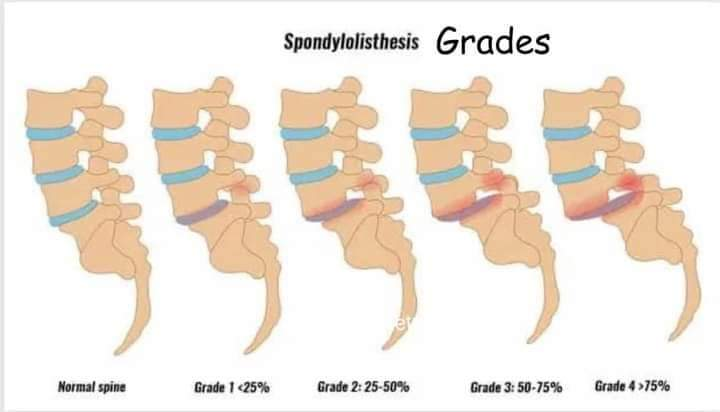
2024-08-17T12:41:48
Physiotherapy clinic in Tambaram Are you Looking for Physiotherapy Treatment in Tambaram, Sunshine Super Speciality Physiotherapy Clinic, We Provide Electrotherapy, Exercise and Manual Therapy, Orthopedic, Neuro, Cardio, Pediatric, Sports and Geriatric Rehabilitation, Post Operative Physiotherapy Treatment, Fracture Rehabilitation, pain free movement. Spondylolisthesis : Spondylolisthesis is a condition that occurs when one vertebra in the spine slips out of its position and shifts forward or backward onto the vertebra below it. This can cause compression of the spinal nerves and lead to pain, numbness, and weakness in the lower back and legs. In this blog, we will discuss the anatomy and physiology of the spine, the causes, symptoms, diagnosis, and treatment of spondylolisthesis. Anatomy and Physiology of the Spine: The spine, also known as the vertebral column, is made up of 33 vertebrae that are stacked on top of each other. The vertebrae are separated by intervertebral discs, which act as shock absorbers and allow for movement between the vertebrae. The spine is divided into five regions: cervical (neck), thoracic (chest), lumbar (lower back), sacral (pelvis), and coccygeal (tailbone). The lumbar region is the most common site for spondylolisthesis to occur. Each vertebra has a bony arch that forms a hollow tube through which the spinal cord passes. Nerves branch off from the spinal cord and exit the spine through small openings between the vertebrae called foramina. The spinal cord and nerves are protected by the vertebrae and the surrounding muscles, ligaments, and tendons. Causes of Spondylolisthesis: There are several causes of spondylolisthesis, including: Congenital: Some people are born with a defect in the vertebrae that makes them more susceptible to spondylolisthesis. Degenerative: As we age, the intervertebral discs between the vertebrae can become thinner and less flexible, which can lead to spondylolisthesis. Traumatic: Spondylolisthesis can also occur as a result of a traumatic injury to the spine. Isthmic: This is the most common type of spondylolisthesis and occurs when there is a defect in the pars interarticularis, which is the bony bridge between the upper and lower facets of the vertebrae. Pathological: Spondylolisthesis can also be caused by a tumor or infection in the spine. Symptoms of Spondylolisthesis The symptoms of spondylolisthesis can vary depending on the severity of the slippage and the location of the affected vertebra. Some common symptoms include: Low back pain that worsens with activity Tightness or stiffness in the lower back muscles Numbness, tingling, or weakness in the legs Loss of bladder or bowel control (in severe cases) Diagnosis of Spondylolisthesis Spondylolisthesis is typically diagnosed using a combination of imaging tests and physical exams. These tests may include: X-rays: X-rays can show the alignment of the vertebrae and the degree of slippage. MRI: An MRI can provide detailed images of the spinal cord and nerves to determine if there is any compression. CT scan: A CT scan can show the bony structures of the spine and detect any defects in the pars interarticularis. Physical exam: Your doctor may perform a physical exam to check your range of motion, strength, and reflexes. SUNSHINE ® SUPER SPECIALITY PHYSIOTHERAPY CLINIC - #DrParthiban #Sunshinephysioclinic.in #Physiotherapyclinicintambaram #Physiotherapyclinicnearme DR.M.P. PARTHIBAN.M.P.T (Ortho), Chief Orthopedic Physiotherapist, Call for Appointments: - 9345122177 East Tambaram, CHENNAI

